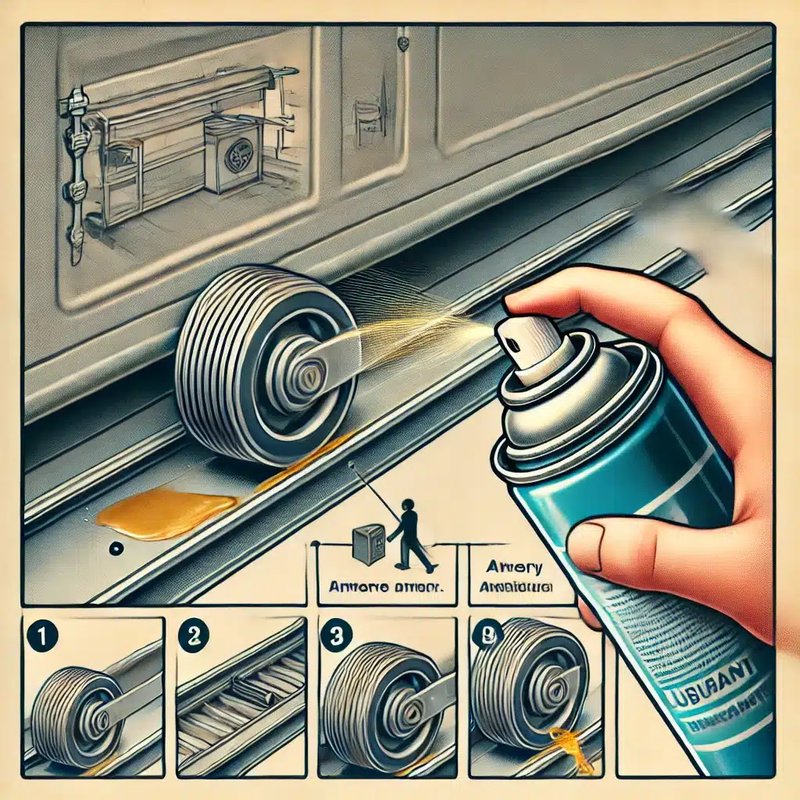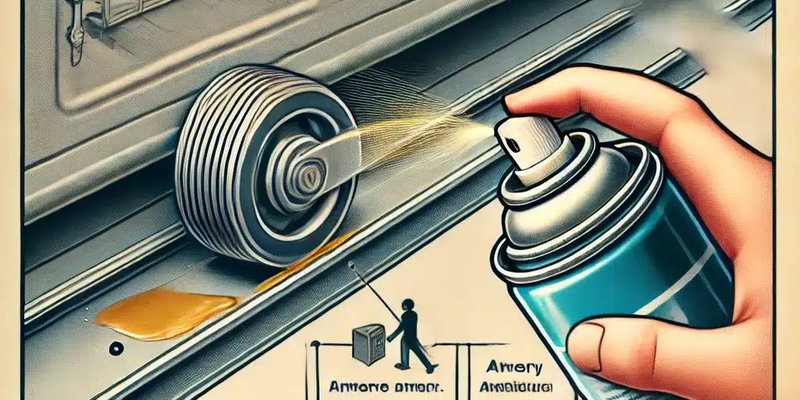
Lubricating door rollers isn’t just about keeping things quiet; it’s about ensuring safety and extending the life of your door system. You might be wondering how often this needs to be done or what products to use. That’s where this guide comes in! Let’s dig into the best practices for lubricating those door rollers, whether you’re dealing with a rustic wooden barn door or a sleek glass sliding door.
Understanding Door Rollers and Their Importance
Before we jump into the nitty-gritty of lubrication, it’s essential to understand what door rollers are and why they matter. Door rollers are typically made of plastic or metal and are designed to allow doors to slide smoothly. They need to be in good shape to prevent wear and tear on both the door and the track. Think of them as the unsung heroes of your door system.
If the rollers are dirty or corroded, you might experience *sticking*, *squeaking*, or even *jamming*. Not only is this frustrating, but it can lead to more significant issues down the line. Issues like the need for costly repairs or even a complete door replacement. That’s why regular maintenance is crucial.
Here’s a quick overview of why you should care about your door rollers:
- Smooth Operation: Well-lubricated rollers glide effortlessly, making daily use more manageable.
- Extended Lifespan: Proper maintenance helps prevent premature wear and tear.
- Safety: A properly functioning door is safer for you and your family.
Choosing the Right Lubricant
You might be wondering, “What kind of lubricant should I use?” Choosing the right lubricant is vital for effective maintenance. There are various options, but not all are suitable for door rollers. Typically, you’ll want to avoid oil-based products as they can attract dirt and grime over time.
Instead, consider using:
- Silicone Spray: This is a great option because it provides a long-lasting barrier against moisture and dirt.
- Graphite Powder: Ideal for metal rollers, graphite is dry and won’t attract debris.
- PTFE (Teflon) Lubricant: This offers a dry, non-sticky solution perfect for various door types.
When selecting a lubricant, always check the manufacturer’s recommendations for your specific door type. For example, brands like Andersen or Pella may have suggested products or guidelines for their specialty doors.
Steps to Lubricate Your Door Rollers
Lubricating door rollers might sound tricky, but it’s straightforward. Here’s a simple step-by-step guide to help you through the process:
1. Gather Your Tools: Before you start, collect your lubricant, a clean cloth, and possibly a screwdriver if you need to adjust the rollers.
2. Clean the Track and Rollers:
– Use a cloth to wipe down the track and rollers, removing any dust or dirt.
– Avoid using water; you don’t want to introduce moisture that could cause rust.
3. Apply the Lubricant:
– Shake the can of lubricant if using spray.
– Lightly coat the rollers and the track. A little goes a long way; too much can create a film that attracts dirt.
4. Test the Door:
– Slide the door back and forth a few times to distribute the lubricant evenly.
– Listen for any squeaks. If you still hear them, you may need to apply more lubricant.
5. Regular Maintenance:
– Aim to lubricate your door rollers every six months, or more often if you use the door frequently.
This process should only take about 15 minutes, and the payoff is significant for keeping your door functional and safe.
Common Problems and Troubleshooting Tips
Sometimes, even with proper lubrication, problems can arise. Here’s a look at some common issues you might face and how to troubleshoot them:
– Squeaking Noise: If you hear squeaks after lubricating, it may mean the rollers are damaged, or debris is trapped. Inspect and clean thoroughly, and replace any worn-out parts.
– Difficulty Sliding: If the door isn’t gliding smoothly, check if the rollers are misaligned. You can often adjust them by loosening screws on the roller assembly.
– Track Issues: If the track is damaged, it might need replacing. Inspect for bends or cracks; these could lead to bigger problems if not addressed.
Addressing these issues early can save you from larger repairs later.
The Role of Environment in Maintenance
Location matters when it comes to maintaining your door rollers. If you live in a humid or coastal area, your rollers might corrode faster due to moisture and salt in the air. Here’s how to adapt your maintenance routine based on your environment:
– In Humid Areas: Consider using a more moisture-resistant lubricant and inspect your rollers more frequently.
– Coastal Regions: Opt for stainless steel rollers rather than standard metal ones, as they’re more resistant to rust.
– Cold Climates: Lubricants can thicken in cold temperatures, so applying a lubricant designed for lower temperatures might be necessary.
Understanding the environment around your home can help extend the life of your door rollers.
Preventive Measures for Longevity
Like anything else, a little prevention goes a long way. Besides regular lubrication, here are some additional tips to help keep your door rollers in top shape:
– Regular Inspections: Make a habit of checking your door rollers during seasonal home maintenance. Look for wear and tear, and listen for unusual noises.
– Keep the Area Clean: Ensure the area around the door is free from debris and dirt. This reduces the amount of grime that can get into the rollers.
– Avoid Overloading: If your door is a sliding one, avoid hanging or placing heavy items on it. This could strain the rollers and lead to quicker wear.
Taking these extra steps can keep your door rollers operating smoothly for years to come.
Lubricating door rollers on specialty doors might seem like a small task, but it plays a crucial role in maintaining not just the function, but also the safety of your door system. Using the right lubricants, following proper techniques, and understanding how environmental factors can affect performance are all essential. Remember, regular maintenance is key—so commit to checking those rollers a couple of times a year.
By taking care of your door rollers, you’re preserving the beauty and functionality of your specialty doors—whether they swing, slide, or roll. After all, a smooth opening can make all the difference in your day-to-day life!
